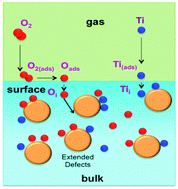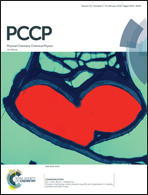Microkinetic model for reaction and diffusion of titanium interstitial atoms near a TiO2(110) surface
Abstract
Semiconductor surfaces provide efficient pathways for injecting native point defects into the underlying bulk. In the case of interstitial atoms in rutile, the TiO2(110) surface exemplifies this behavior, although extended defects in the bulk such as platelets and crystallographic shear planes act as net sources or sinks depending upon specific conditions. The present work constructs a quantitative microkinetic model to describe diffusion and based upon isotopic gas–solid exchange experiments. Key activation barriers for are 0.55 eV for surface injection, 0.50 eV for site-to-site hopping diffusion, and 3.3 eV for dissociation of titanium interstitials from extended defects.



 Please wait while we load your content...
Please wait while we load your content...